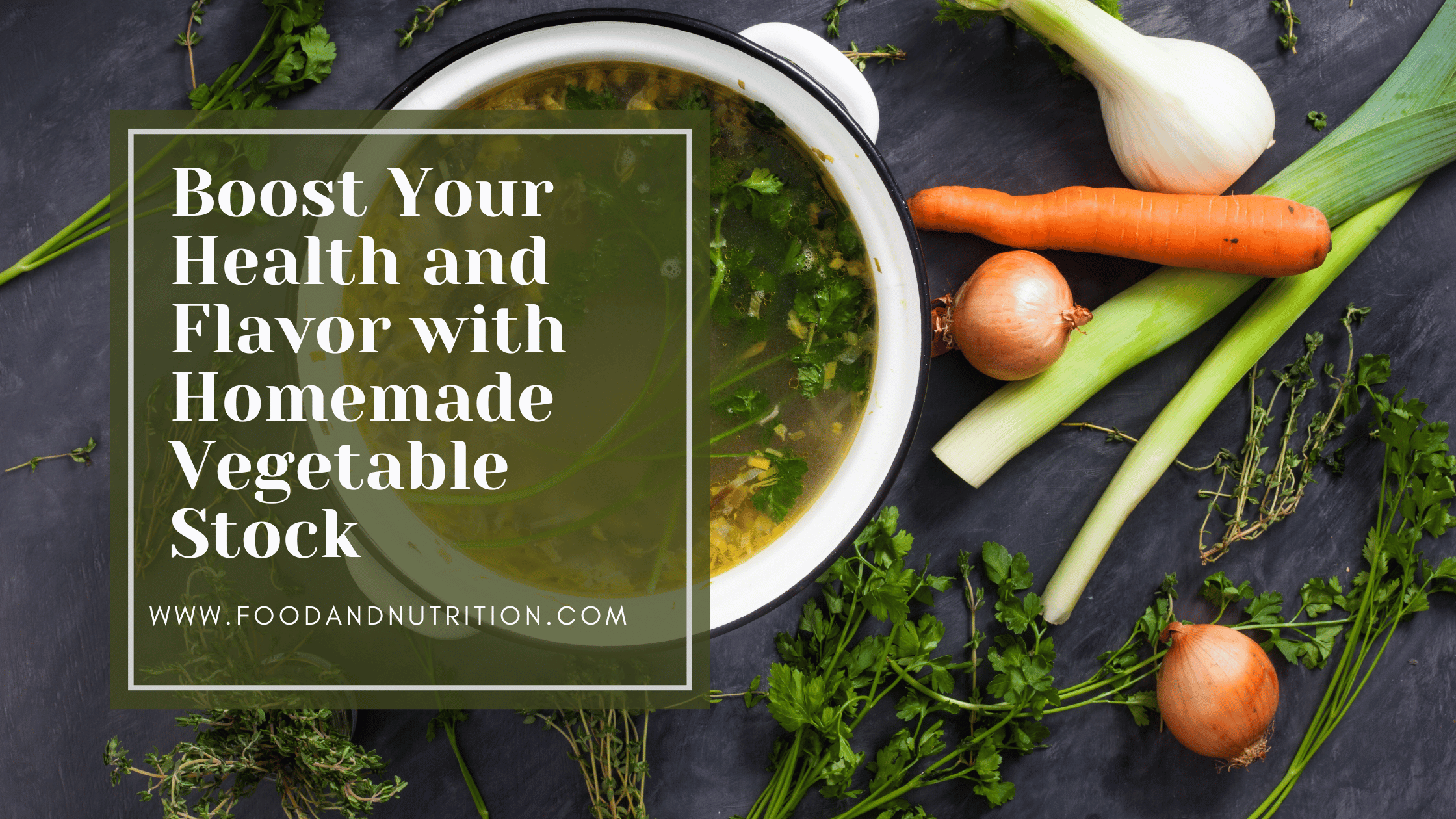From Kitchen Staple to Culinary Marvel: Mastering the Art of Homemade Vegetable Stock

In the world of cooking, where flavors and nutrition intertwine, homemade vegetable stock reigns supreme. This versatile elixir has a rich history spanning centuries and continues to captivate taste buds and nourish the body. In this blog post, we will explore the fascinating history of vegetable stock, uncover the reasons behind its enduring popularity, delve into its common ingredients, delve into its nutritional benefits, and discover exciting serving ideas that will inspire your culinary adventures.
The History of Vegetable Stock
Vegetable stock has been a culinary staple across cultures for centuries. Its origins can be traced back to frugal kitchens where resourcefulness played a crucial role. In the past, households would repurpose vegetable scraps and leftovers to create a flavorful broth. However, with the rise of vegetarianism and veganism, vegetable stock has evolved into a go-to alternative to meat-based stocks, further fueling its popularity.
The Popularity of Vegetable Stock
Why has vegetable stock stood the test of time and garnered such popularity? First and foremost, it presents a fantastic opportunity to reduce food waste. By utilizing vegetable trimmings and leftovers, you can transform them into a nourishing stock, contributing to a more sustainable kitchen. Moreover, vegetable stock is incredibly versatile, serving as a foundational ingredient for an array of dishes, including soups, stews, and sauces. Its delicate yet robust flavors provide a delightful backdrop for an assortment of culinary creations. Additionally, the health-conscious among us appreciate vegetable stock as a low-calorie and low-fat option, while still delivering a remarkable depth of flavor.
Common Ingredients in Vegetable Stock
While the exact composition of vegetable stock can vary, some ingredients commonly found in its aromatic blend include onions, carrots, celery, garlic, and an assortment of herbs such as parsley, thyme, and bay leaf. Some recipes may also incorporate leeks, mushrooms, tomatoes, or fennel to enhance the complexity of flavors. These ingredients are typically sautéed in a touch of oil to release their essence before simmering them with water for several hours. The result is a golden elixir that embodies the essence of the vegetables.
Vegetable Stock
Ingredients
- – 1 tablespoon olive oil
- – 2 leeks well washed and chopped
- – 4 medium onions chopped
- – 6 large carrots chopped
- – 3 celery ribs chopped
- – 1 bunch parsley chopped
- – 2 teaspoons marjoram
- – ½ teaspoon thyme
- – 3 bay leaves
- – 1 tablespoon black peppercorns
- – 1 ½ gallons 18 cups cold water
Instructions
- In a large stock pot, heat olive oil over medium heat.
- Add leeks, onions, carrots, and celery, and sauté until lightly browned.
- Stir in parsley, marjoram, thyme, bay leaf, black peppercorns, and cold water.
- Bring the mixture to a boil, then reduce the heat, cover the pot, and simmer for 1-1.5 hours.
- Strain the stock through a fine sieve or a cheesecloth-lined colander.
- Press or squeeze the vegetables to extract all the liquid, and discard them.
- Use the vegetable stock immediately in your desired recipes or freeze it for later use.
Notes
Nutritional Benefits of Vegetable Stock
Beyond its exceptional taste, vegetable stock provides a host of nutritional benefits. The vegetables used in its preparation are teeming with vitamins, minerals, and antioxidants. These nutrients bolster the immune system, promote overall well-being, and offer protection against chronic diseases such as heart disease and cancer. Additionally, the fiber present in vegetable stock aids digestion and contributes to feelings of satiety, making it an excellent choice for those seeking to maintain a healthy weight.
Serving Ideas to Ignite Your Culinary Creativity
Now that we understand the rich history and healthful qualities of vegetable stock, let’s explore some serving ideas that will awaken your inner chef:
- Nourishing Vegetable Soup: Utilize vegetable stock as the foundation for a hearty and soul-warming soup. Combine your favorite seasonal vegetables, such as carrots, peas, and potatoes, for a nourishing bowl that celebrates the beauty of simplicity.
- Delectable Risotto: Elevate your risotto game by replacing traditional chicken stock with vegetable stock. The result is a creamy, flavorful dish that bursts with earthy nuances. Add mushrooms or roasted butternut squash for an extra touch of indulgence.
- Flavorful Gravies and Sauces: Vegetable stock forms the backbone of rich and flavorful gravies. Pour it over roasted vegetables or mashed potatoes to enhance their taste profile and create a tantalizing symphony of flavors.
- Wholesome Quinoa or Rice: Enhance the nutritional value and taste of your quinoa or rice dishes by cooking them in vegetable stock instead of water. This simple substitution adds layers of flavor and transforms a side dish into a star attraction.
Conclusion
Homemade vegetable stock is a culinary masterpiece that combines history, nutrition, and versatility in a single simmering pot. Its humble origins have blossomed into a beloved staple, cherished for its ability to reduce food waste, deliver robust flavors, and promote a healthier lifestyle. So, the next time you find yourself with a surplus of vegetable scraps, embrace the art of vegetable stock and unlock a world of endless culinary possibilities. Let the aromatic bouquet and wholesome goodness of homemade vegetable stock ignite your passion for cooking and take your creations to new heights.
- Unlock Classic Marinara Sauce: A Flavorful & Nutritious Guide
- Embracing Summer: The Ultimate Watermelon Feta Salad with Tomatoes & Olives
- Rediscovering Lebanese Salad: A Refreshing Delight with a Rich Heritage
- Eating Your Way to Healthy Blood Pressure: A Guide to Lowering Hypertension
- Perfect Roasted Leg of Lamb: A Timeless Delight for Your Table
- Romesco Sauce: A Flavorful Spanish Delight That Elevates Every Dish
